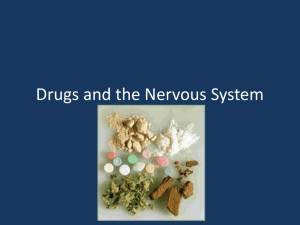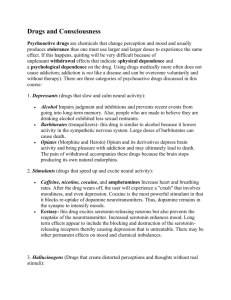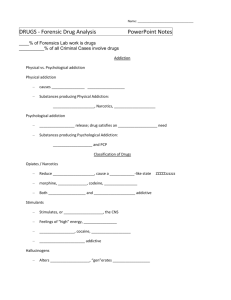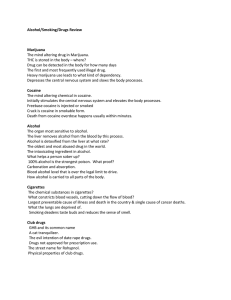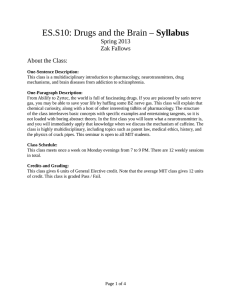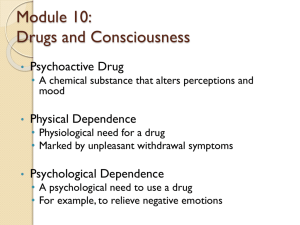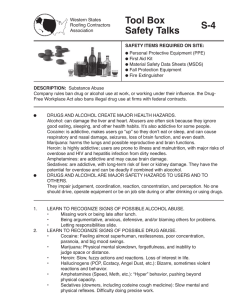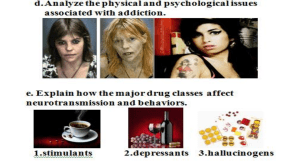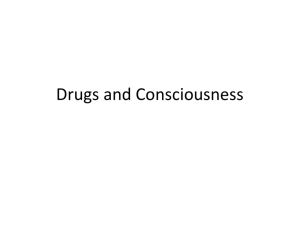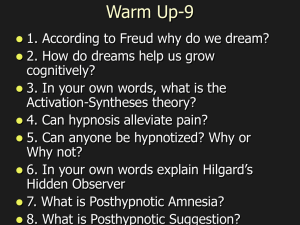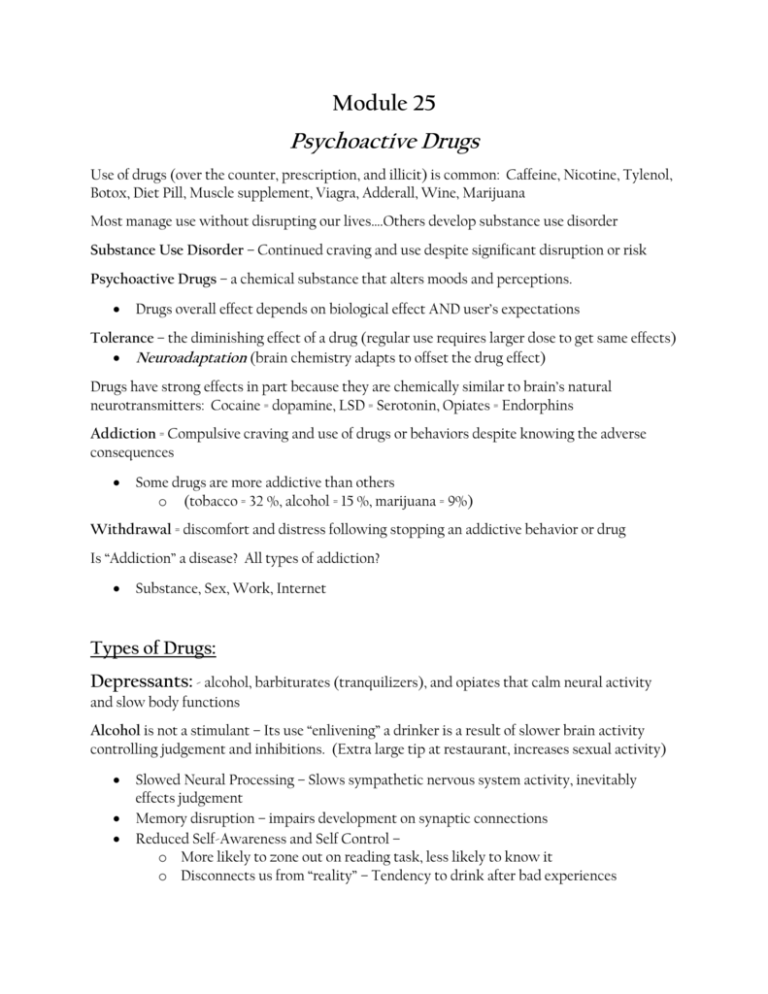
Module 25
Psychoactive Drugs
Use of drugs (over the counter, prescription, and illicit) is common: Caffeine, Nicotine, Tylenol,
Botox, Diet Pill, Muscle supplement, Viagra, Adderall, Wine, Marijuana
Most manage use without disrupting our lives….Others develop substance use disorder
Substance Use Disorder – Continued craving and use despite significant disruption or risk
Psychoactive Drugs – a chemical substance that alters moods and perceptions.
Drugs overall effect depends on biological effect AND user’s expectations
Tolerance – the diminishing effect of a drug (regular use requires larger dose to get same effects)
Neuroadaptation (brain chemistry adapts to offset the drug effect)
Drugs have strong effects in part because they are chemically similar to brain’s natural
neurotransmitters: Cocaine = dopamine, LSD = Serotonin, Opiates = Endorphins
Addiction = Compulsive craving and use of drugs or behaviors despite knowing the adverse
consequences
Some drugs are more addictive than others
o (tobacco = 32 %, alcohol = 15 %, marijuana = 9%)
Withdrawal = discomfort and distress following stopping an addictive behavior or drug
Is “Addiction” a disease? All types of addiction?
Substance, Sex, Work, Internet
Types of Drugs:
Depressants: - alcohol, barbiturates (tranquilizers), and opiates that calm neural activity
and slow body functions
Alcohol is not a stimulant – Its use “enlivening” a drinker is a result of slower brain activity
controlling judgement and inhibitions. (Extra large tip at restaurant, increases sexual activity)
Slowed Neural Processing – Slows sympathetic nervous system activity, inevitably
effects judgement
Memory disruption – impairs development on synaptic connections
Reduced Self-Awareness and Self Control –
o More likely to zone out on reading task, less likely to know it
o Disconnects us from “reality” – Tendency to drink after bad experiences
Expectancy Effect – Our belief of how the drug “should” effect us leads to that effect
o Study of men and sexual aggression (alcohol or not, erotic clip, subsequent
behavior)
Built in “excuse” allowed the same behaviors to emerge
*** Girls become addicted more quickly (lack stomach enzymes to break down alcohol)
Barbituates – tranquilizers, depress nervous system activity
prescribed to induce sleep or reduce anxiety
Opiates – Heroin and narcotics (codeine, morphine, etc… prescribed for pain) –
Reduce/suppress pain and anxiety, create lethargic state of blissful pleasure. Tolerance is quick,
thus increased use necessary. Opiates simulate neurotransmitters (endorphins) causes the brain
to stop releasing producing them, thus making quitting (withdrawal) excruciating.
Stimulants – Excite Neural activity and speed up body function:
Nicotine, amphetamines,
Cocaine, Ecstasy (Increase in heart rate, drop in appetite, high energy
Nicotine – tobacco
Highly addictive and deadly
5.4 million tobacco users die every year from use
1/7 attempts to quit are successful (1/2 of users who have smoked in the past have quit)
Cocaine – powerful, fast acting, stimulate (produced from coca plan…Coca-Cola) Euphoria and
increased alertness (flooded with neurotransmitters (dopamine, serotonin, and norepinephrine)
followed by a “Crash”
Crack = faster acting, more intense, shorter lasting version of Cocaine
Methamphetamine – chemically related to parent drug (amphetamine) with much greater
effects. Releases dopamine, enhances energy and mood (8 hours effect)
Hallucinogens – Psychedelic drugs that distort perception and evoke sensory images
without sensory input (LSD, Marijuana)

